Here at Make Real, we are putting people into VR and AR headsets all the time, including ourselves, whether it be in the studio, the VRLab, at event expo booths, client demos or deployments, even LBE VR Arcade spaces indirectly. We always follow a strict hygiene procedure to ensure that our headsets are clean and uncontaminated between uses and we aren’t inadvertently passing infections between users, or ourselves. Our studio development kits never leave the building and event and demo kits are kept apart from the studio headsets, whereas client devices are prepared in their own area away from both dev and event units.
However that’s only part of the procedure; when in use and actively demoing, here’s a list of hygiene activities we carry out, which we strongly encourage you to follow. (Please note, Make Real is not affiliated or a partner of any brand products that are mentioned within this blog post, these are just what we use.)
The stock foam facial interfaces are porous and soak up sweat, catching bacteria and everything else. Whilst this might be less of a concern if it’s your own personal headset that no-one else is going to use, it’s still a good idea to replace with a variant that can be cleaned after use more easily and effectively, especially if you’re planning a good workout in Loco Dojo! These are also good (for the headset) if your users wear a lot of makeup.
There are a couple of brands we use – VRCover replacement sets and the Eyglo silicone covers allow the facial interface to be cleaned or swapped out between uses or a period of use, with the latter coming in a range of colours, which also helps towards quick visual headset identification when dealing with more than one in the same space.
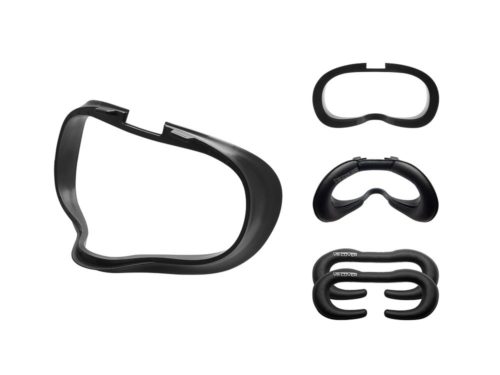
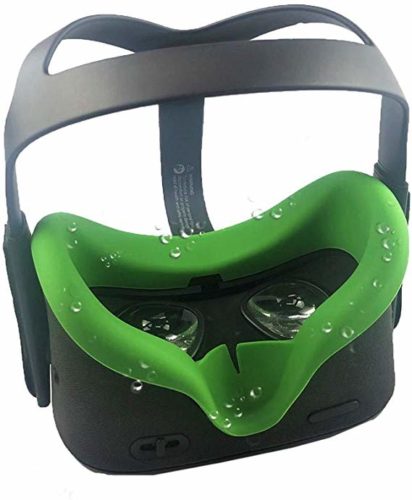
These aren’t just a convenient marketing tie-in for Loco Dojo, these disposable paper masks add another layer of hygiene between human and device, even if you have replaced the stock facial interfaces. However we will admit that they can be a bit awkward to position correctly and then get the headset over the top on a user’s face neatly but there are a couple of types that make things a bit easier: look for the newer designs for how the ear straps fit or the ones that attach to velcro pads attached to the body of the headset without the need for the ear straps. People do love taking a picture of them wearing them too so you also get to share photos of you being good with hygiene. Once that person has finished, you can safely dispose of their ninja mask, ready with a fresh one for the next user.
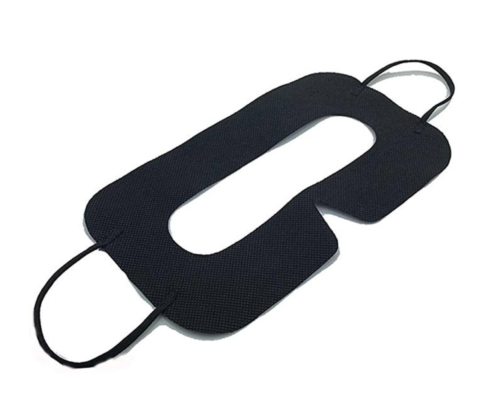
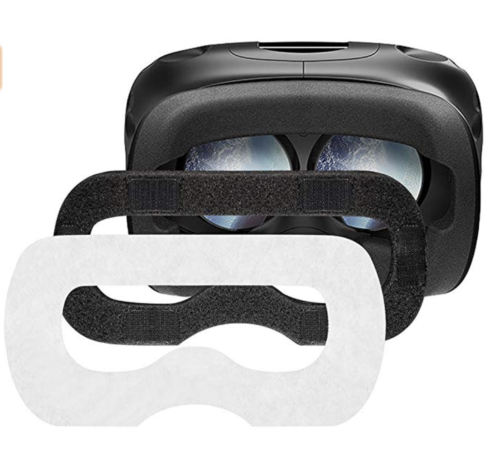
Typically between uses you would want to avoid alcohol-based solutions or wipes to avoid any irritation to the next user so look for ones with natural ingredients and more caring use cases. However it is good to use a strong cleaner at busy events but you have to ensure the headset is completely dry and free from residue before allowing the next user to put it on.
Just as important is remembering to wipe down the controllers as well, especially if showcasing an experience that might make users feel the fear of working at heights or similar; sweaty palms and clammy controllers are neither hygienic or pleasant for the next user.
It’s important that your hands are clean if you are touching the devices constantly, helping people in and out of the headset, but also those of the person you are putting into VR, especially if they are going to be holding tracked input controllers like Oculus Touch, to ensure they are as clean when they go in as when they come out.
Medical-grade hand sanitiser works best and be sure to have it easily accessible to all to use and visually demonstrate the importance of hygiene to users.
Many of our clients are now deploying large volumes of VR headsets at scale and hygiene is important to them, as it should be to you. Whilst UV wands exist, they need training and careful use to be effective so we are seeing more of our clients opt for the easier, more effective dedicated solution provided by CleanBox. This only takes 60 seconds to clean a headset between uses and has been certified for use and effective hygiene.
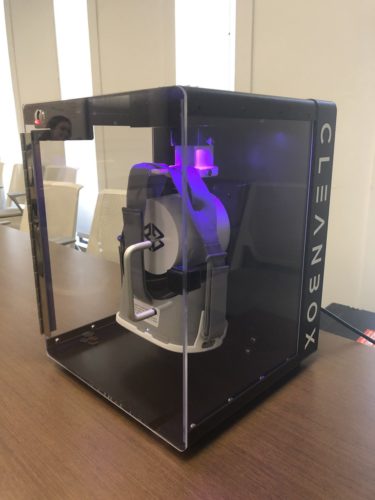
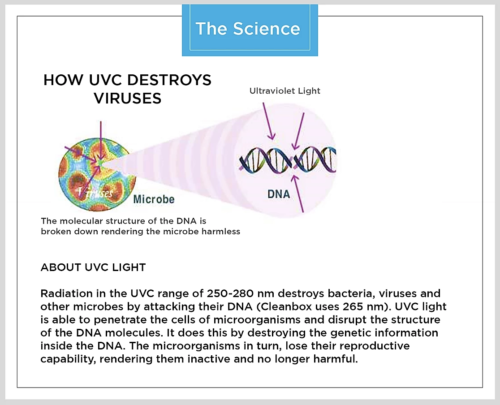
The above list is the absolute minimum you should be doing to improve hygiene (UV options may only make sense at scale in terms of usage and costs) but in light of the recent global outbreak of Coronavirus (COVID-19), there are some additional steps you should undertake to help ensure reduced risk of spread and infection. This will help ease any fears around hygiene and VR usage in light of Coronavirus and the widespread media coverage, many of which results from the unknown and general panic created by wall-to-wall series of articles, many with conflicting information.
By creating a centralised area for self-hygiene, or a stock of solutions and wipes for easy access, you are putting people into the mindset of cleanliness. Adding signs and instructions around how to wash your hands properly, the importance of hygiene etc you are making it clear and obvious that you a) care and b) expect everyone to use it. If you have a larger space, set up multiple stations so no-one has any excuse not to use it.
Make yourself and everyone associated with running VR devices aware of the symptoms of Coronavirus so that they are looking out for and aware of anyone who might be contagious. We don’t expect everyone to need a medical degree but by being house nurse, you can help reduce the risk of spread and infection. If you do see anyone who looks unwell, politely and calmly explain to them why perhaps they should not try VR that day.
It’s often busy and manic at events, and if you’re running a VR space where throughput and turnover of users is key, it’s easy to rush or forget an important simple step but as said already, it’s better to be safe than sorry. Slow down the process of onboarding and offboarding, pay attention to the 4/5 steps above, and take the time for hygiene. It will even give you more time to talk to the user beforehand, helping them put their mind at ease and making it clear to them that you care about hygiene and their safety.
Make sure everyone washes their hands before and after each VR session, following the NHS Hand Washing Guidelines. It might be helpful to place a sign-up in the bathrooms to help people know how to do wash their hands effectively. Even with hand sanitiser, effective hand washing will help reduce the possibility of spread.
It may be too late in light of the scenes of panic-buying on the news and shared on social media but having a good stock of hygiene products at all times is essential to continued operations, to ensure you haven’t run out of something important just before a big event, which you will now have to go without.
Hopefully you have found these steps and procedures helpful and informative without increasing fear or confusion around deploying and operating VR devices. It’s important today to be seen carrying out steps for hygiene in general, following negative media coverage abroad where suspected poor VR hygiene has resulted in health issues amongst event attendees, but even more so currently when everyone is on heightened awareness due to the Coronavirus outbreak.
Assuming the event hasn’t been cancelled as a result of the outbreak, once this clears over, it’s important not to get lax and always carry out a healthy hygiene routine for you, your employees and your customers.
We’re always happy to talk to you about how immersive technologies can engage your employees and customers. If you have a learning objective in mind, or simply want to know more about emerging technologies like VR, AR, or AI, send us a message and we’ll get back to you as soon as we can.